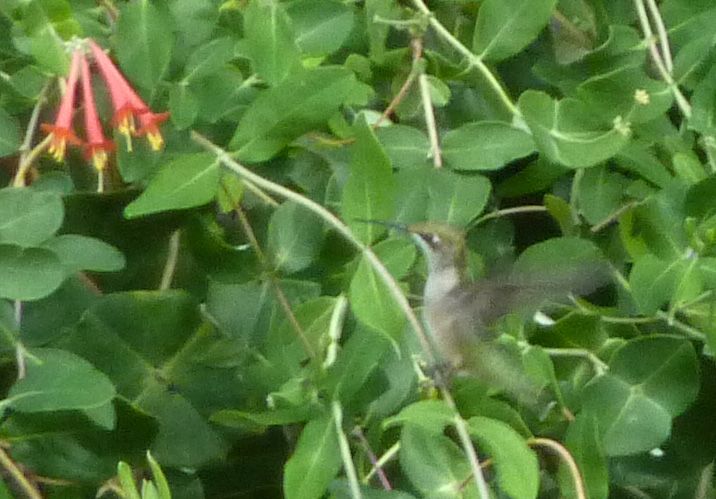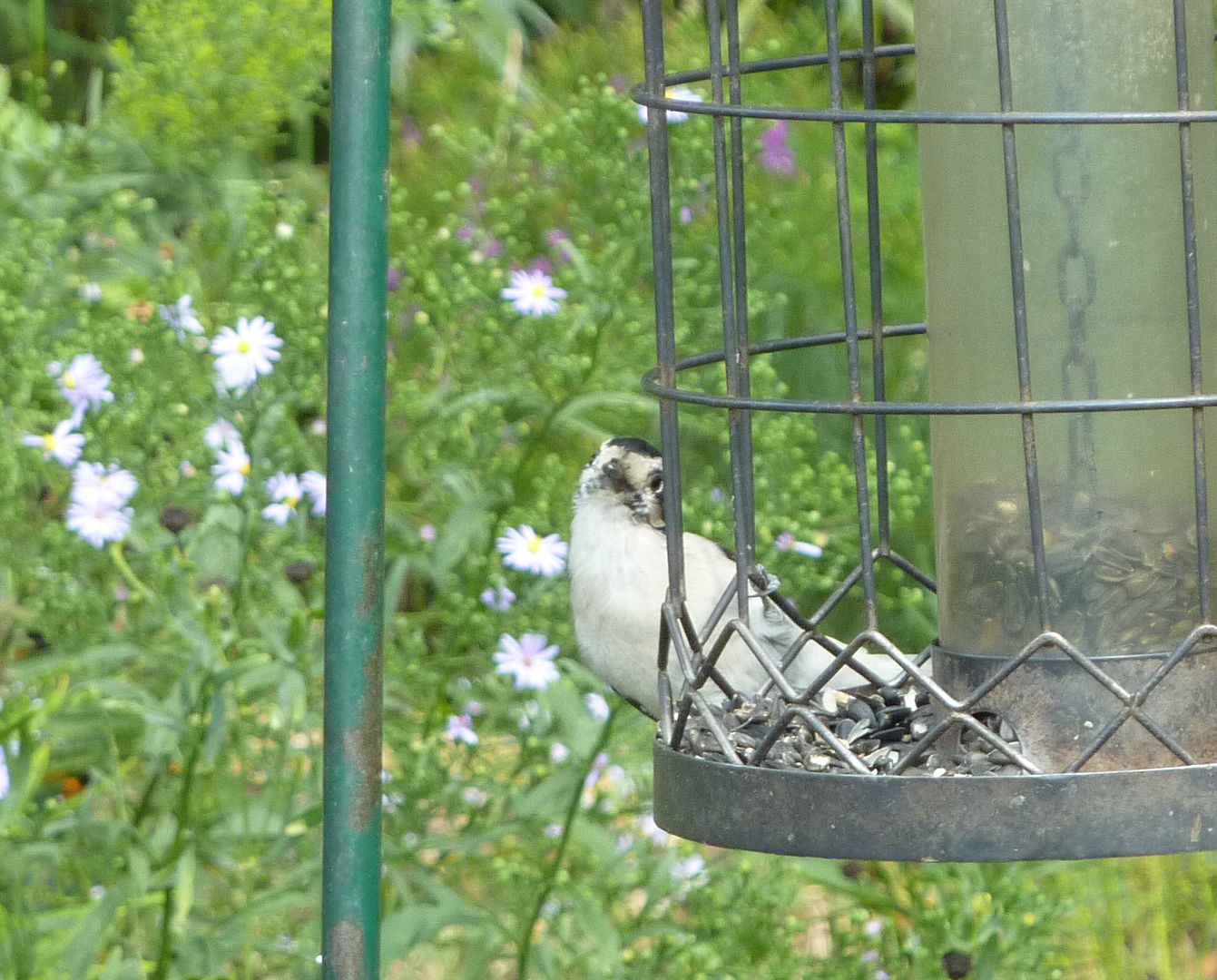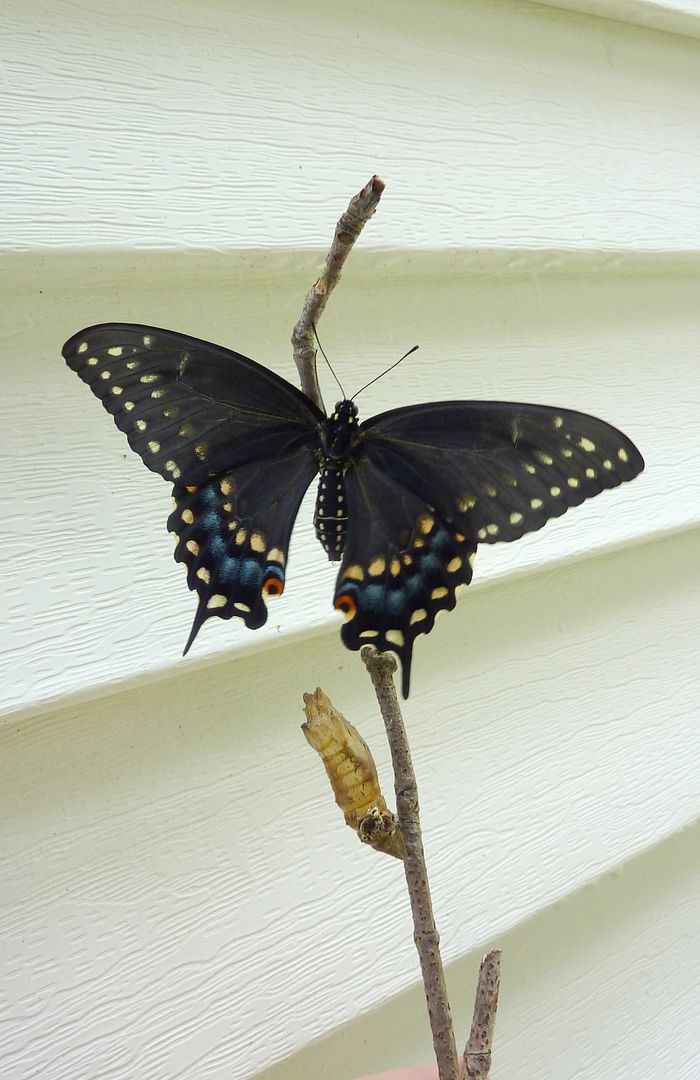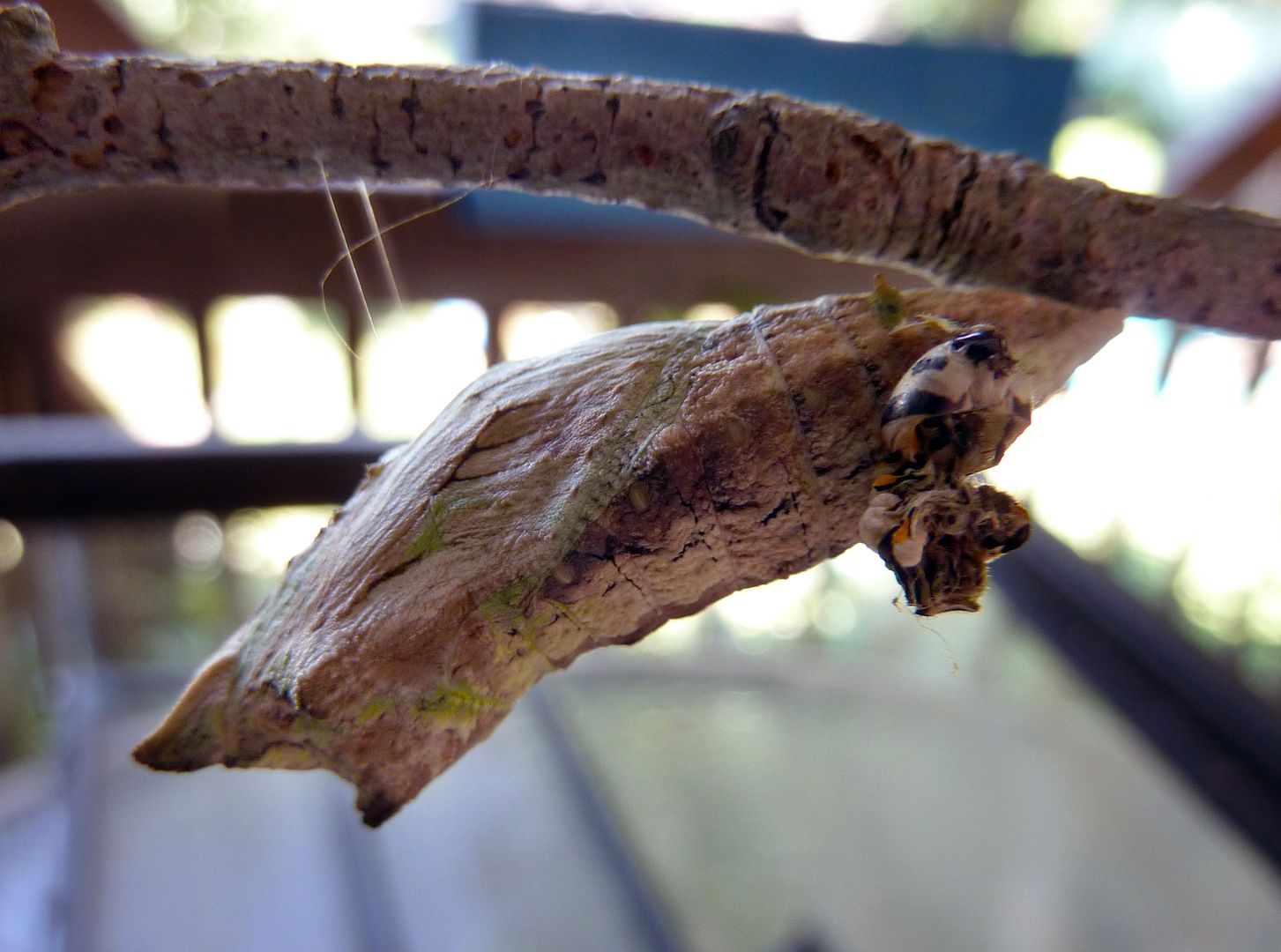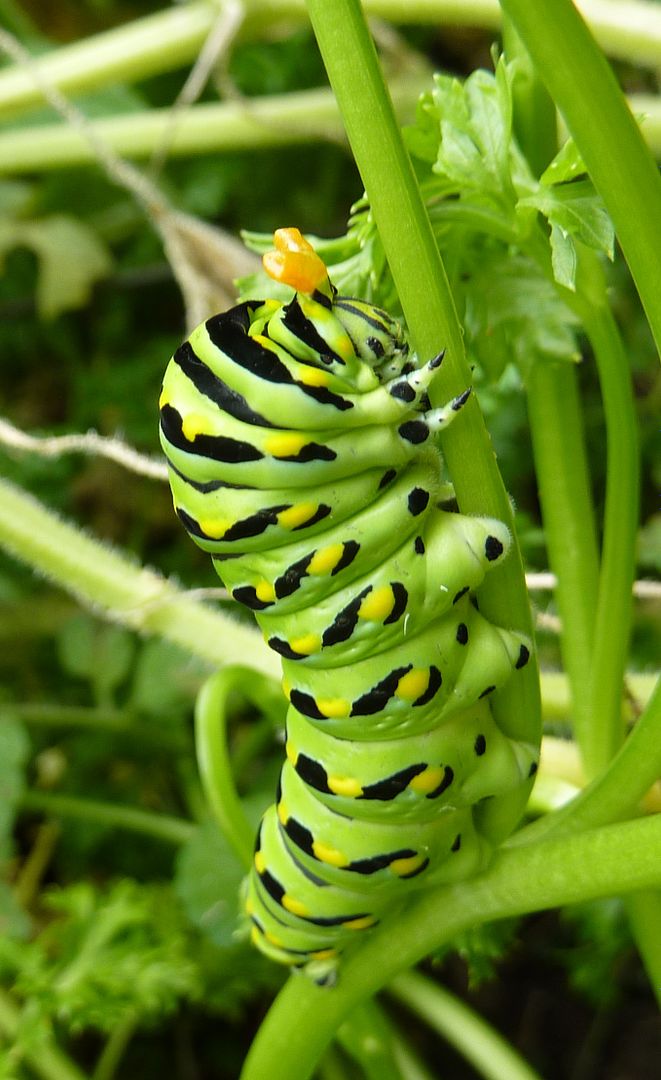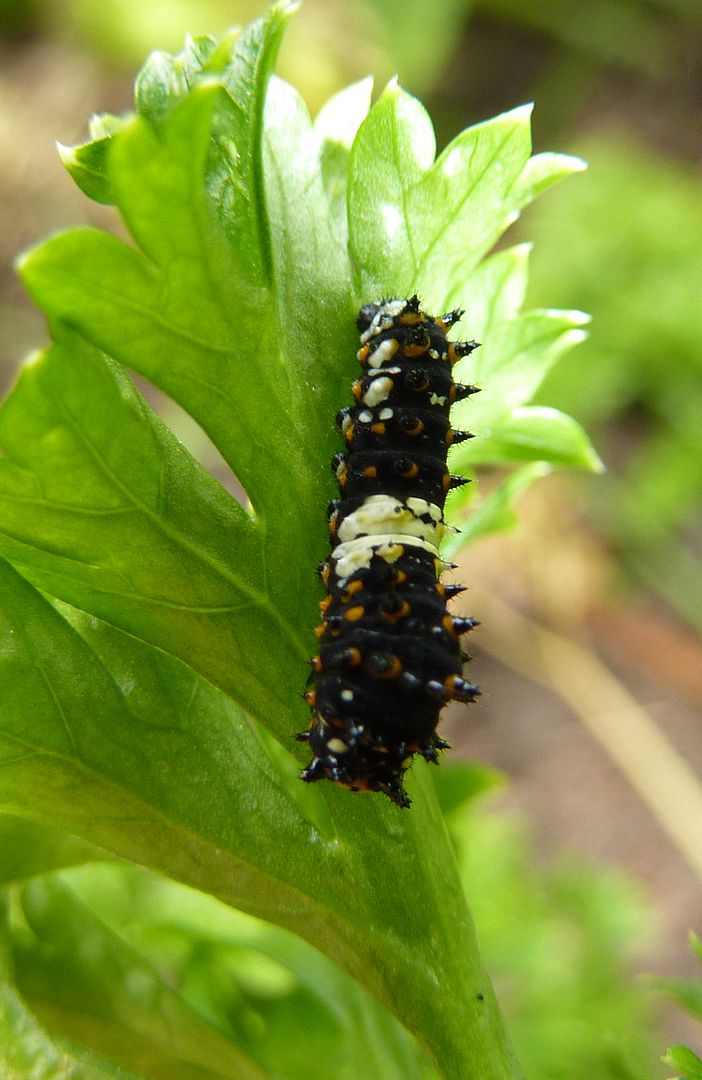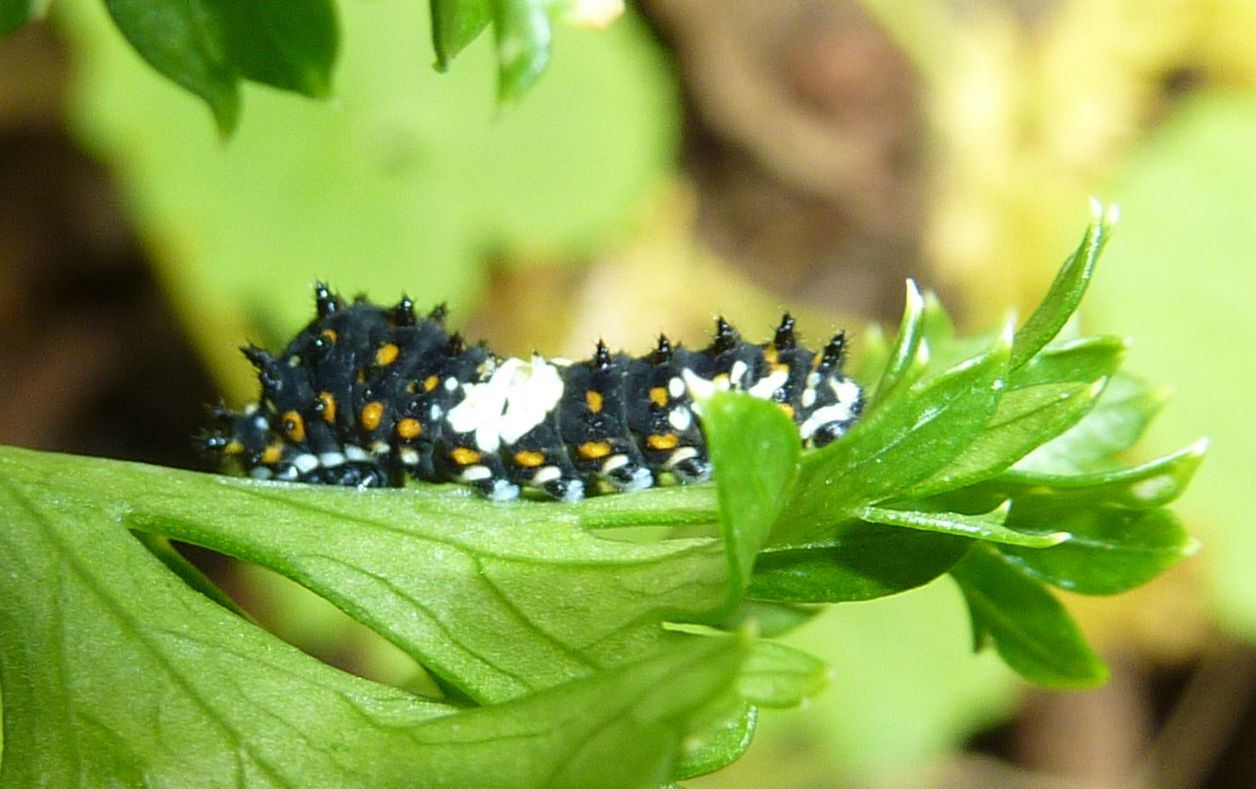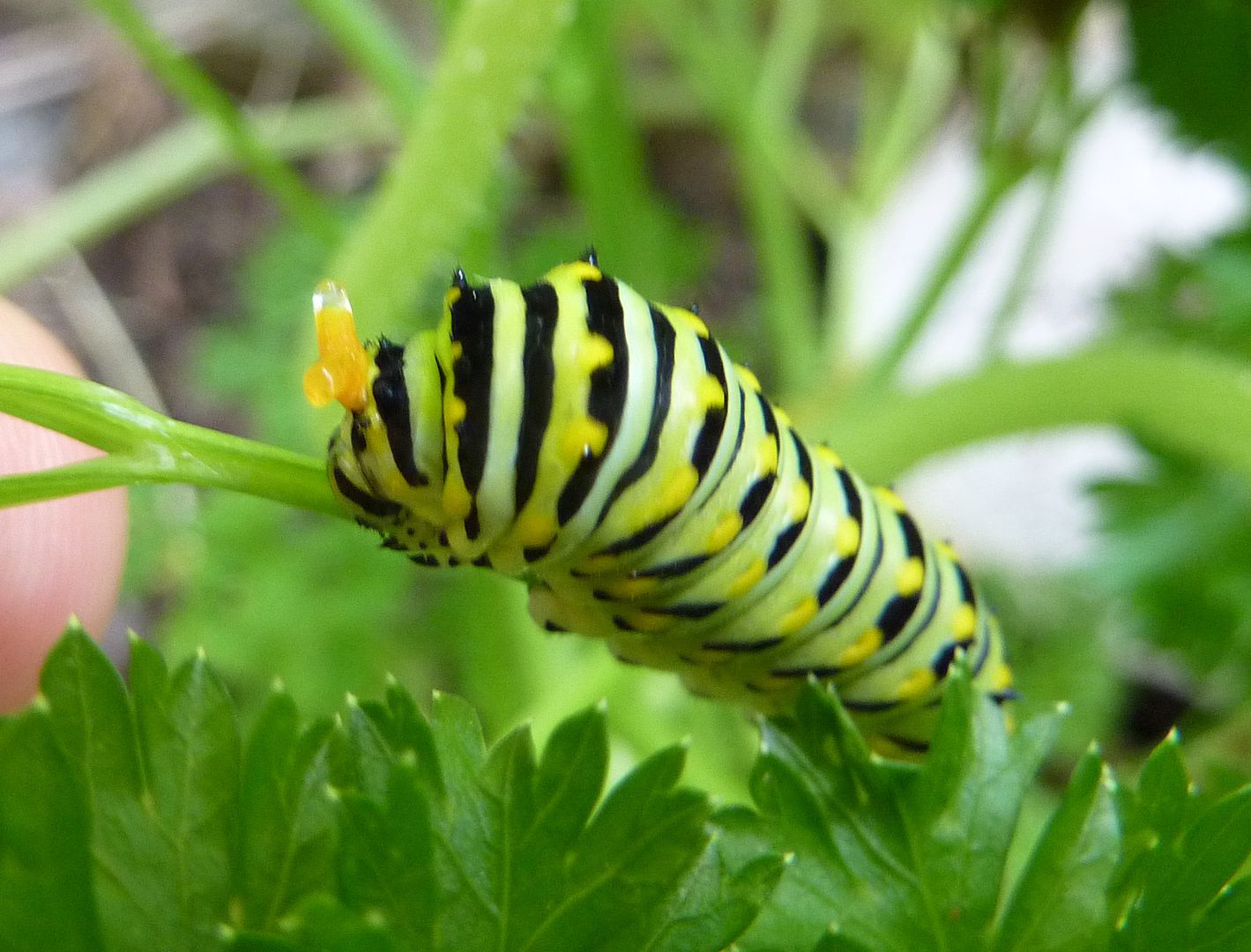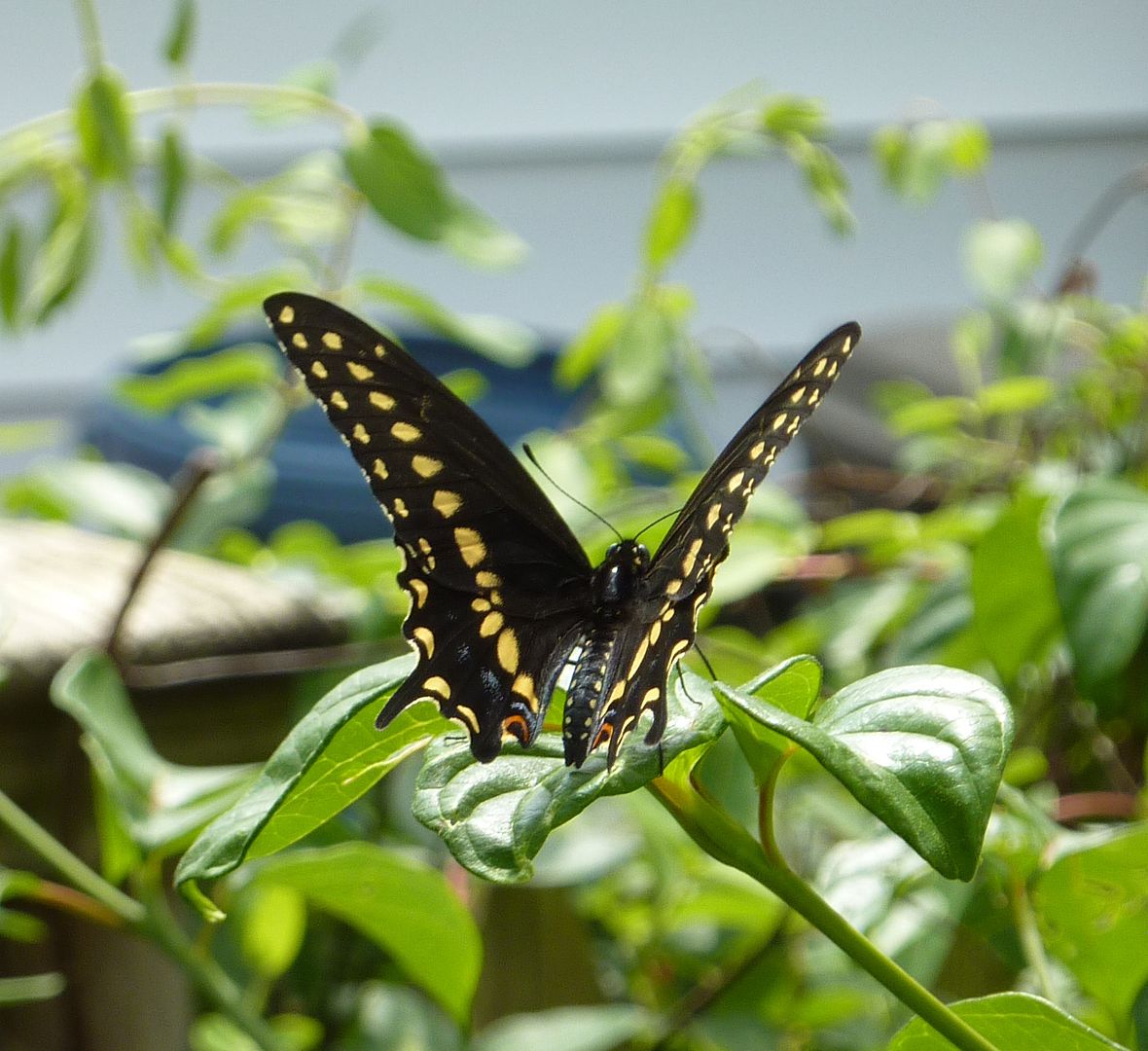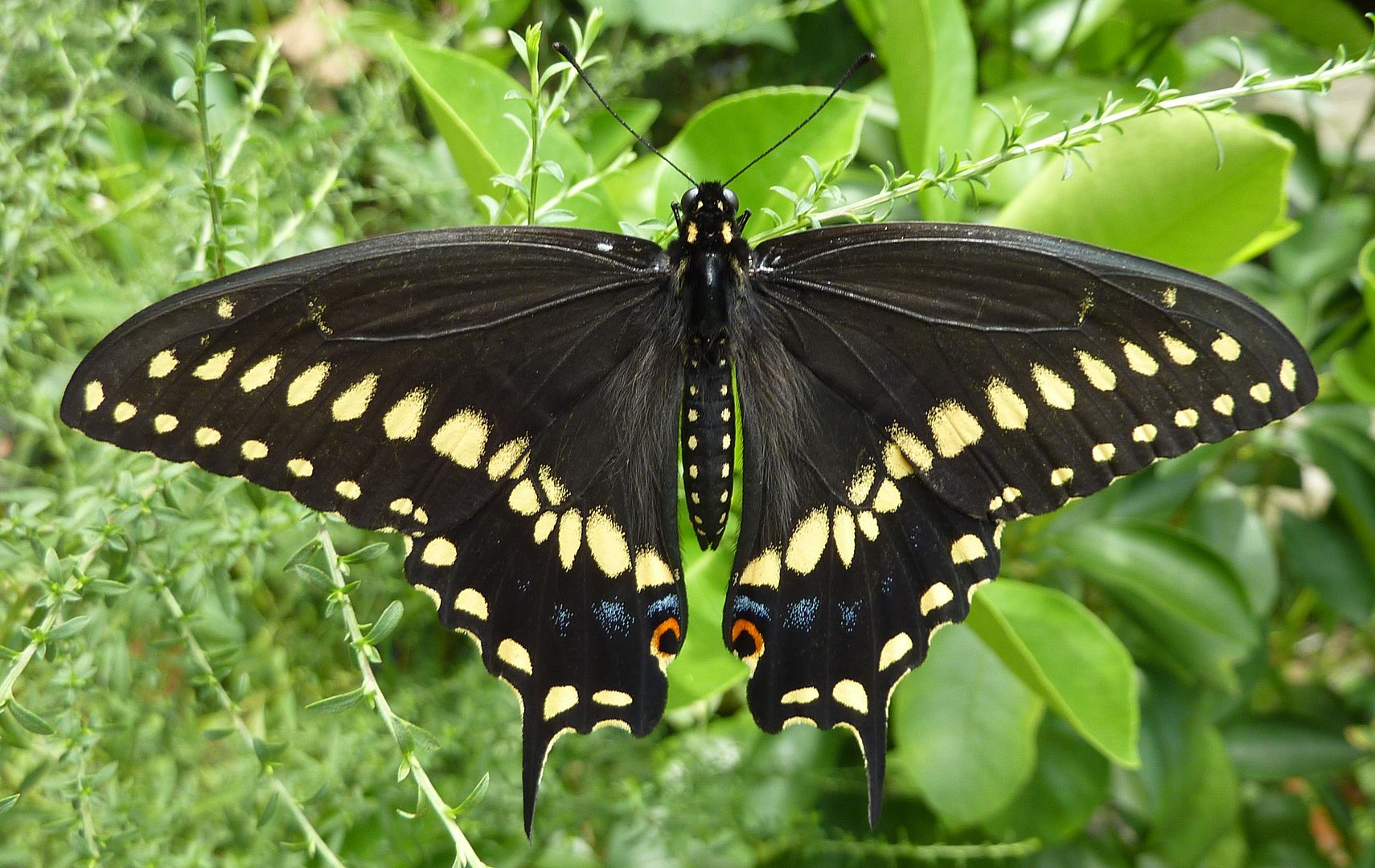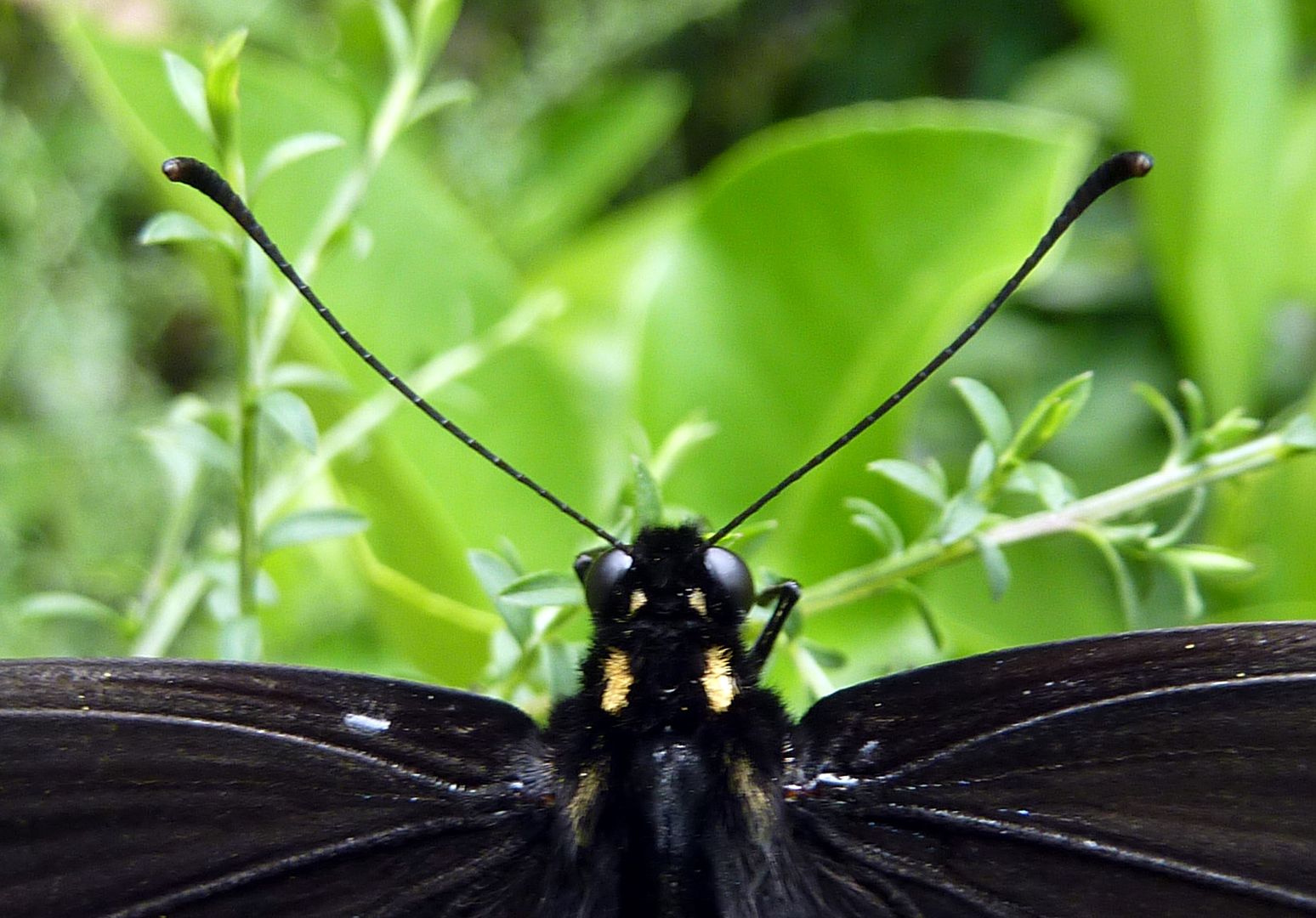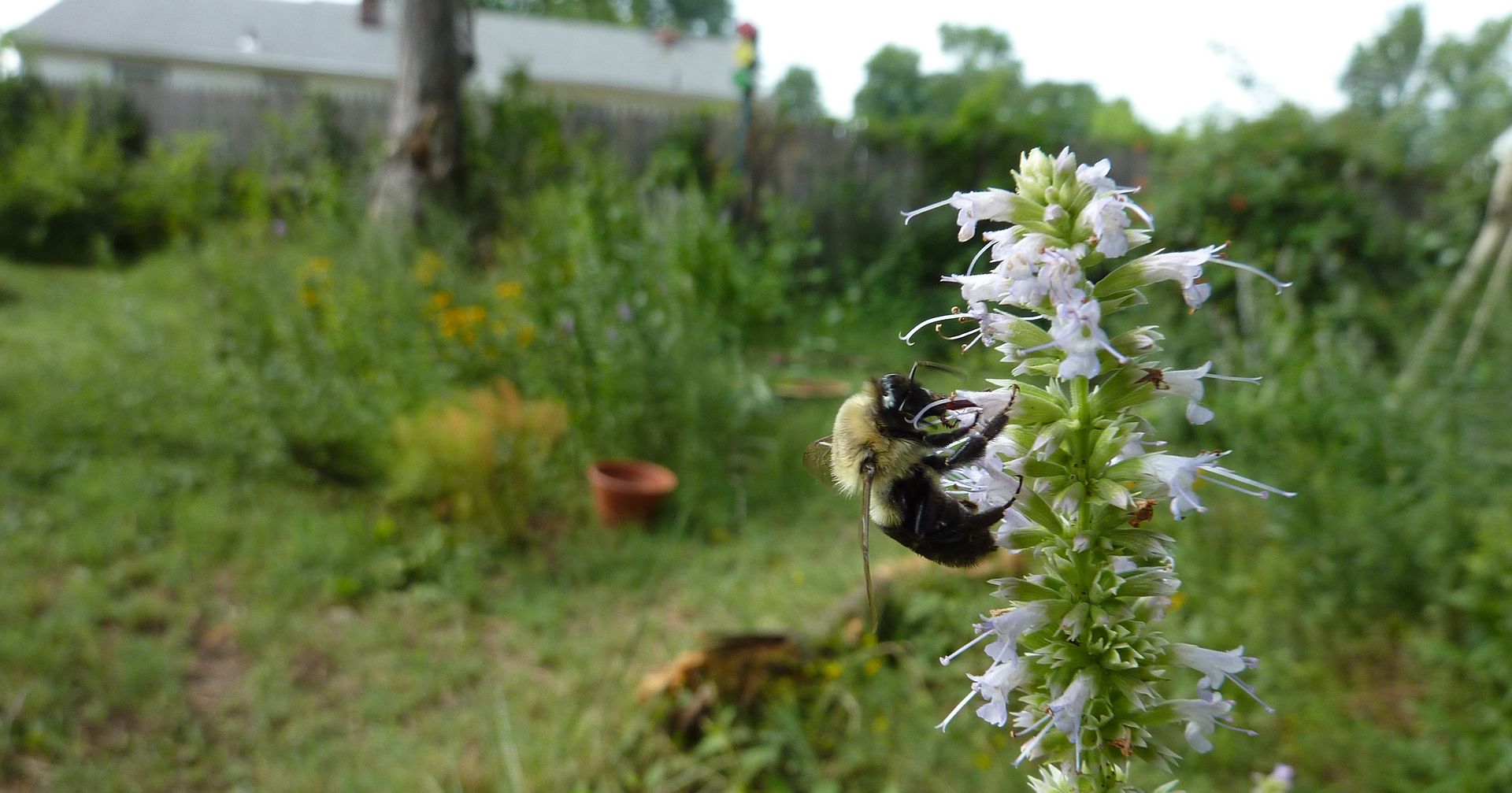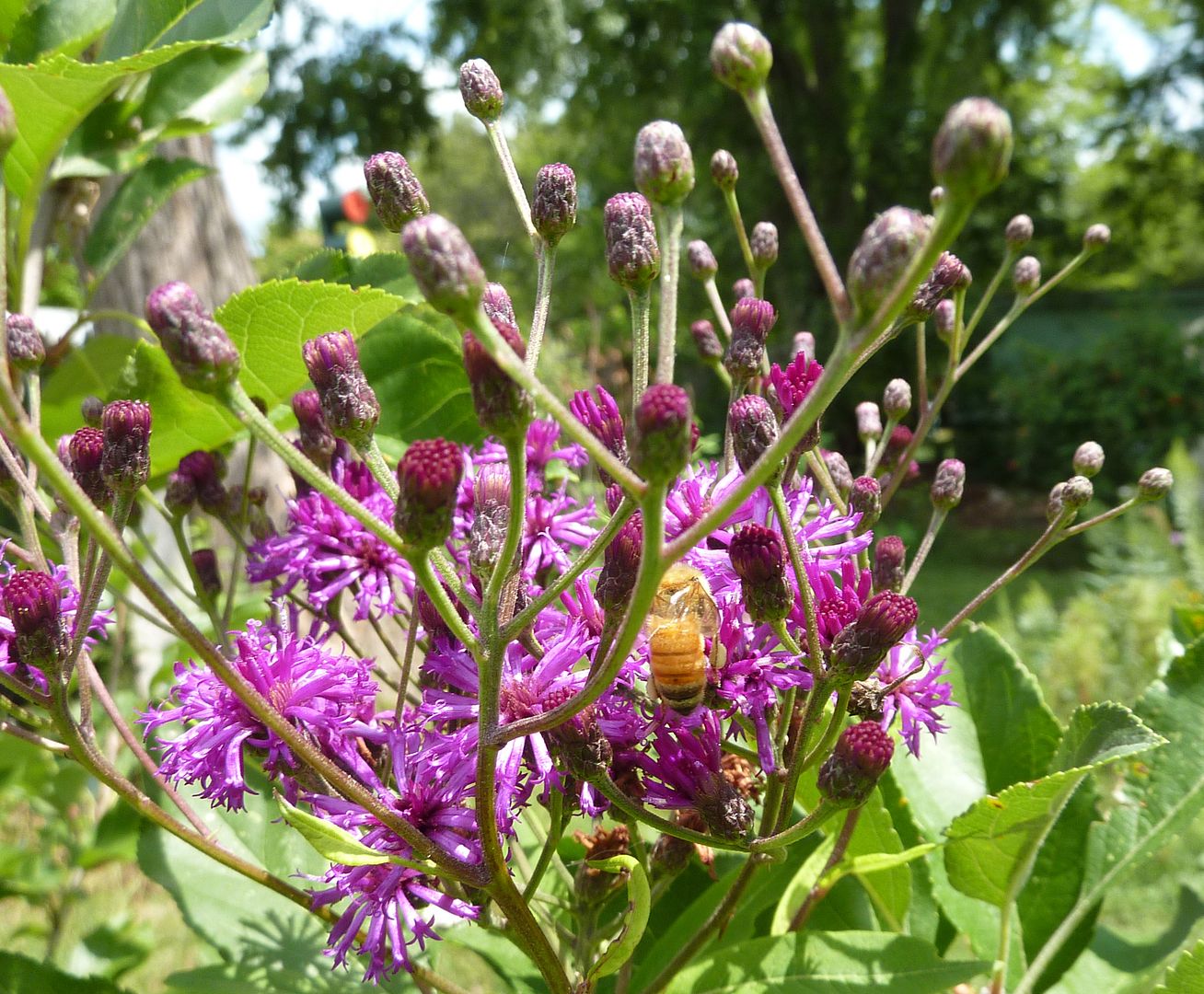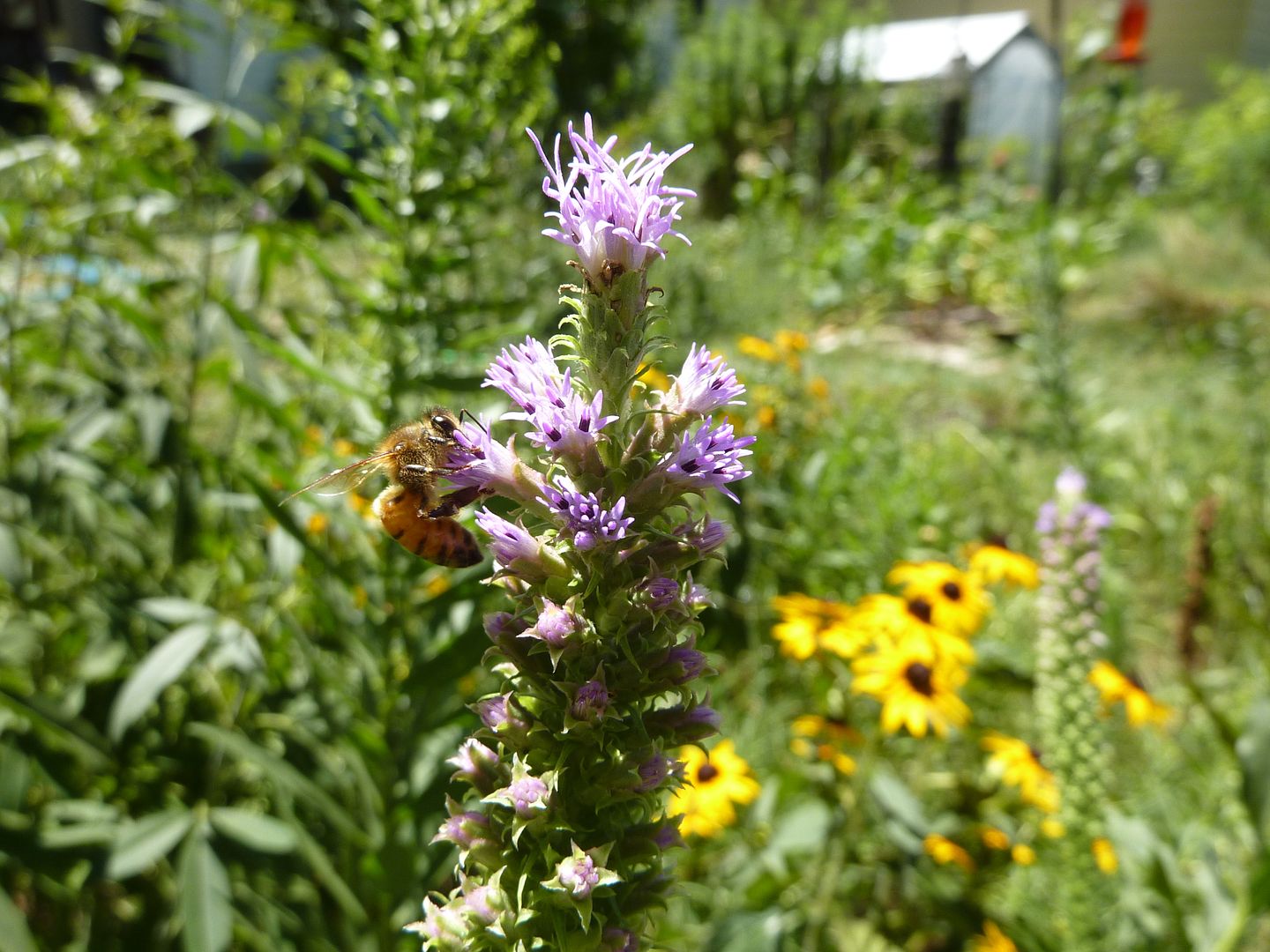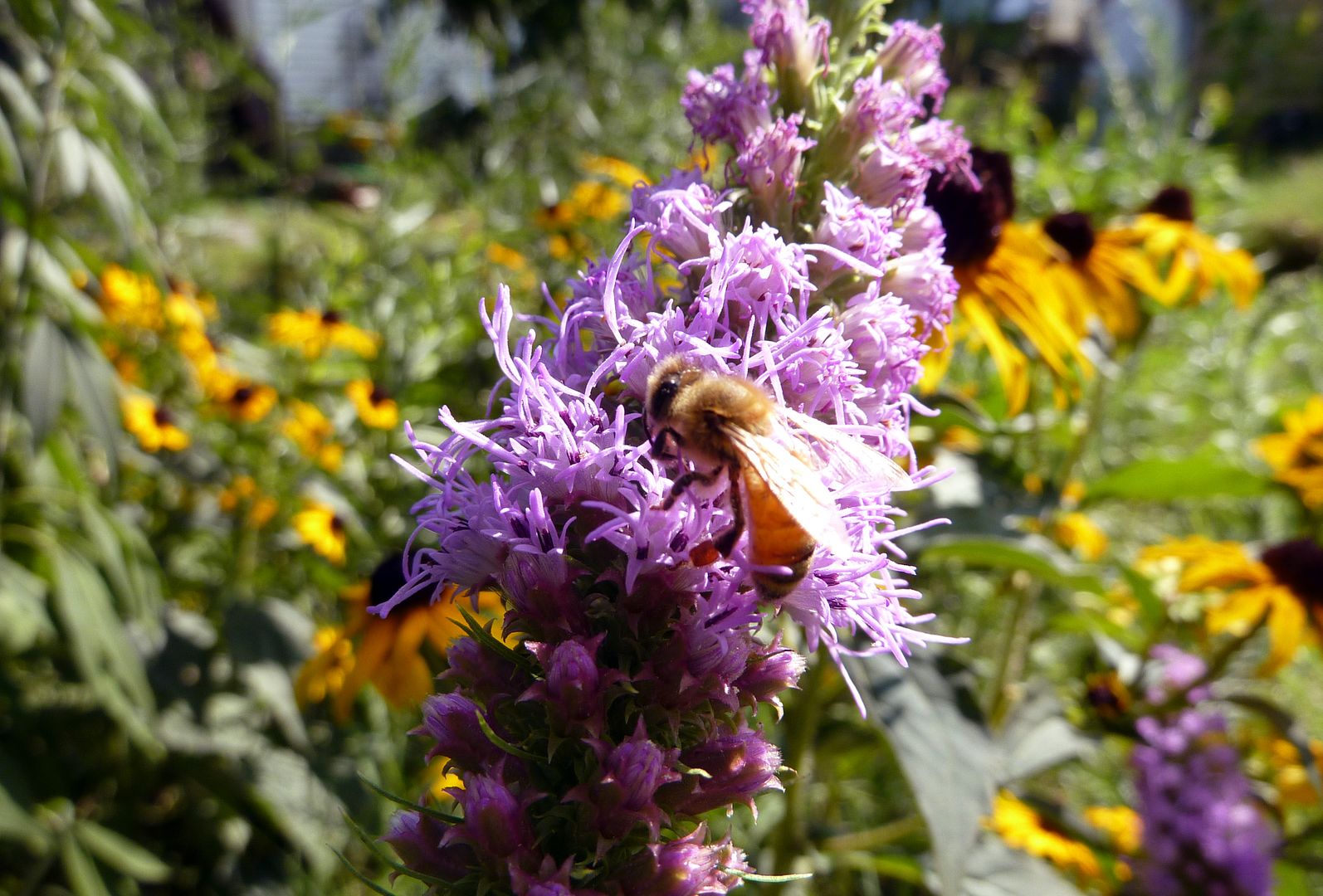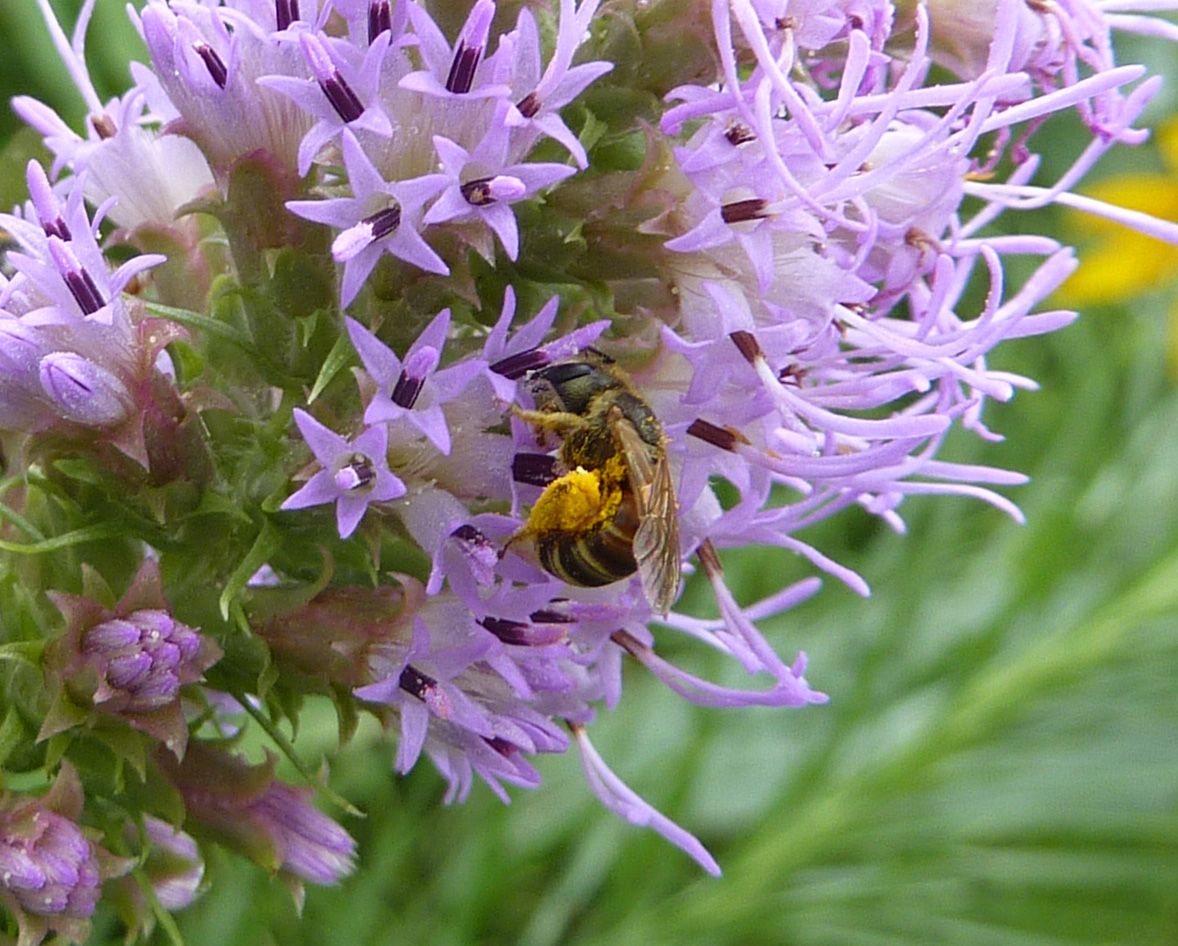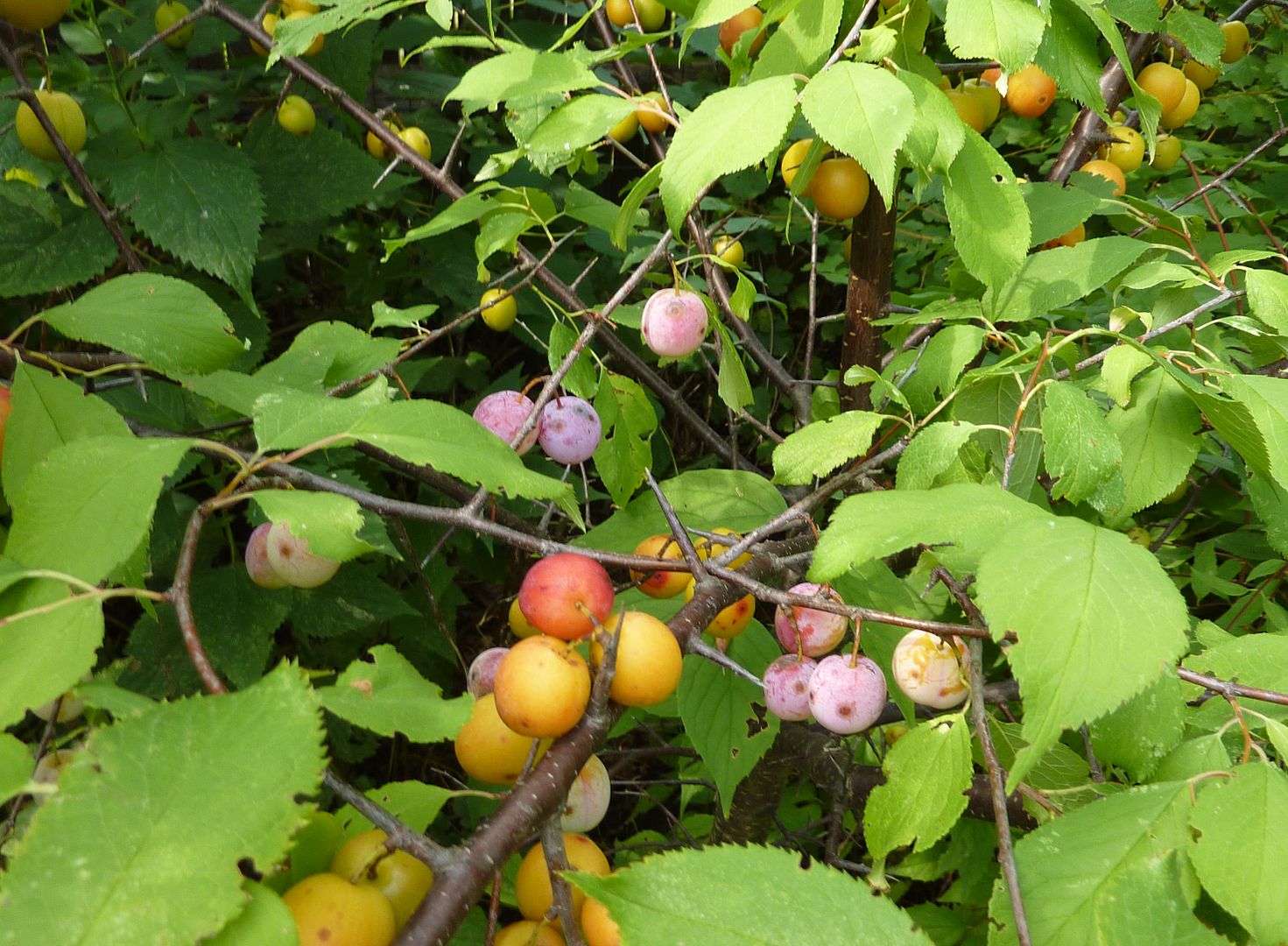While spying a Goldfinch through the window this morning I soon realized that there was a lot of bird activity going on in the yard. The Goldfinch itself landed on some Anise Hyssop to inspect for seeds then took off to one of the weedy Rose of Sharons growing along the fence. It took off before I could snap any pictures but then I noticed the Hummingbird flying about.
They've been showing up to the Coral Honeysuckle every morning and afternoon these past few weeks. As we move into colder weather the vine should produce another flush of blooms though nothing compared to the early spring flowers.
Rahhhh!?
So I glanced at the bird feeder to find this speckled Black and White Warbler, which is the first time I've ever seen those in the yard. I understand that they migrate south but I've never noticed them before.
Wednesday, August 29, 2012
Tuesday, August 28, 2012
Caterpillars that Look Like Lady Gaga
Once again the Yahoo home page linked to a "news" story where someone over at Outdoor is blogging that years ago someone uploaded a photo of a moth that looks like a poodle.
Here is the original article.
It basically reads like it was written by a spoiled 16 year old girl.
What really got to me though was this comment here.
Which has inspired me to search the internet for images of Caterpillars that look like Lady Gaga. (Also a fun drinking game for Lepidopterists reading along at home.)
The Stinging Rose Caterpillar looks just like Lady Gaga.
The Paddle Caterpillar looks just like Lady Gaga.
The Giant Swallowtail Caterpillar, which actually mimics bird shit to not get eaten by birds, looks just like Lady Gaga.
The Spotted Tussock Caterpillar looks just like Lady Gaga.
And so on... So these caterpillars really don't have anything in common other than they look somewhat eccentric. I haven't seen Lady Gaga do anything new lately so maybe my vision of her is a few years old. She wears attention getting get ups, and costumes, and tries to come off as fashion forward. She's pushed the boundaries on acceptable female attire on so many fronts that I could probably have posted random insect photos and still captioned each one as it looks just like Lady Gaga.
Here is the original article.
It basically reads like it was written by a spoiled 16 year old girl.
The first word that comes to mind when casting your eyes upon this photo of a bedazzling insect labeled the Venezuelan Poodle Moth is Photoshop. Really? A moth that looks like a poodle? Eyelashes that Lady Gaga would envy? Seriously?
As it turns out, yes, it is real...
What really got to me though was this comment here.
This moth reminds us of Lady Gaga.
Which has inspired me to search the internet for images of Caterpillars that look like Lady Gaga. (Also a fun drinking game for Lepidopterists reading along at home.)
And so on... So these caterpillars really don't have anything in common other than they look somewhat eccentric. I haven't seen Lady Gaga do anything new lately so maybe my vision of her is a few years old. She wears attention getting get ups, and costumes, and tries to come off as fashion forward. She's pushed the boundaries on acceptable female attire on so many fronts that I could probably have posted random insect photos and still captioned each one as it looks just like Lady Gaga.
Monday, August 27, 2012
Black Swallowtail Hatched
It's a girl! The Black Swallowtail, Papilio polyxenes, chrysalis I had hatched today. The male and female to the species look very similar but I'm siding with it being a female from the lack of more yellow. This should make that male who's been soaring around the garden happy. Unfortunately shortly after she flew off, it started down pouring here. I hope she's alright.
Thursday, August 23, 2012
Confusing News Articles report 3,000,000 Bees Removed from Driveway in Queens
There's a news article going around today about 45 honeybee hives in one man's driveway having to be removed. None of them seem to seem to say clearly enough as to why, but BEES!!!
New York Post
Yahoo
CBS New York
I gather that he's selling his house, maybe? And the real estate agent freaked out, I think? And this man helped with the removal of his hives... where he might get fined an outrageous amount of money.
The Tone of the Article
Ewww these bees are awful! OMG there's 45 hives being kept like Dogs! Neighbors complained about the constant buzzing and being attacked by "swarms" of bees.
But...
This man thought of them like his faithful companions. Imagine 45 dogs living in a 20' by 20' area. For just pennies a day you too can donate to make sure this man's bee yard doesn't look like a shanty town in Rwanda.
The articles read to touch on both stories here and I don't understand. The Dog analogy does not work for either case. Maybe these people should visit a bee yard sometime. I mean they might be spaced out a bit more than 20' by 20' but we might as well compare humans on a farm vs. in the city.
How Many Hives?
45? Where? I'm looking at the pictures and I count and with estimating I count about 23. Some of those are nucs too, that is they're 5 frame boxes that make up the whole hive, instead of the traditional 10 frame boxes which one can continue to put boxes on top of. Maybe they just counted the boxes?
The bottom line is the headline is all you needed to read with any of these articles.
New York Post
Yahoo
CBS New York
I gather that he's selling his house, maybe? And the real estate agent freaked out, I think? And this man helped with the removal of his hives... where he might get fined an outrageous amount of money.
The Tone of the Article
Ewww these bees are awful! OMG there's 45 hives being kept like Dogs! Neighbors complained about the constant buzzing and being attacked by "swarms" of bees.
But...
This man thought of them like his faithful companions. Imagine 45 dogs living in a 20' by 20' area. For just pennies a day you too can donate to make sure this man's bee yard doesn't look like a shanty town in Rwanda.
The articles read to touch on both stories here and I don't understand. The Dog analogy does not work for either case. Maybe these people should visit a bee yard sometime. I mean they might be spaced out a bit more than 20' by 20' but we might as well compare humans on a farm vs. in the city.
How Many Hives?
45? Where? I'm looking at the pictures and I count and with estimating I count about 23. Some of those are nucs too, that is they're 5 frame boxes that make up the whole hive, instead of the traditional 10 frame boxes which one can continue to put boxes on top of. Maybe they just counted the boxes?
The bottom line is the headline is all you needed to read with any of these articles.
Tuesday, August 21, 2012
Black Swallowtail Chrysalis
Black Swallowtail Chrysalis. Before forming this harder outer skin the caterpillar spins a safety line (top left) to hold it in place. They then shed off their outer layer of skin which you can still see here (middle right) somewhat still attached. Their skin then goes into a transformation taking on a wood-like texture to mimic a plant stem.
Black Swallowtails overwinter in the chrysalis stage and its around this time of the year that it becomes uncertain which chrysalises will hatch in a few days and which will wait until 6 to 8 months and hatch next spring.
Thursday, August 16, 2012
Monday, August 13, 2012
Black Swallowtail Caterpillar
Sure enough our parsley has a Black Swallowtail Caterpillar on it, Papilio polyxenes.
Younger instars lack their primary defense and instead focus on mimicking bird poop.
One size up presents a different story. Black Swallowtail Caterpillars have a horn that pops out of their head which sprays foul smelling formic acid. Upon being clutched in a bird's mouth they aim that stuff right for the eyes! In older caterpillars the horn is long enough to be pressed right into the bird's eye where they rub the acid all around. Birds quickly learn to not eat them.
Younger instars lack their primary defense and instead focus on mimicking bird poop.
One size up presents a different story. Black Swallowtail Caterpillars have a horn that pops out of their head which sprays foul smelling formic acid. Upon being clutched in a bird's mouth they aim that stuff right for the eyes! In older caterpillars the horn is long enough to be pressed right into the bird's eye where they rub the acid all around. Birds quickly learn to not eat them.
Wednesday, August 8, 2012
A Black Swallowtail
A few days ago I noticed a male Black Swallowtail fluttering around my yard. The species name is Papilio polyxenes, as Black Swallowtail hardly describes anything in that swallowtail family accurately. 90% of them are black swallowtails, because they all happen to be mimicking the Pipevine Swallowtail, Battus philenor which is poisonous. Anything that causes a mother bird to regurgitate all the food for her babies prematurely is not something any mother bird would dare eat again.
Males of this species have the long line of yellow dots all along the wing. Females have these dots less pronounced, and with more blue along the rear of the wings.
For whatever reason this male was unusually cooperative for me taking photos.
Knowing the species was hanging about the yard I knew to check various host plants for eggs. Sure enough it seems our parsley was dotted by a female. I'll keep checking on these little eggs as they develop.
Males of this species have the long line of yellow dots all along the wing. Females have these dots less pronounced, and with more blue along the rear of the wings.
Knowing the species was hanging about the yard I knew to check various host plants for eggs. Sure enough it seems our parsley was dotted by a female. I'll keep checking on these little eggs as they develop.
Tuesday, August 7, 2012
Bees in the Garden
This is probably the best year my yard has ever done for pollinators. Mountain Mint and Anise Hyssop are what the honeybees are using most.
Ironweed is a close runner up. These plants are kind of huge though, compared to how many more bees are willing to work the Hyssop and Mint which don't take up as much space.
Clethra alnifolia, my favorite shrub, is also blooming this week. The smell is somewhat overpowering if you put your nose up to them but when the wind is blowing and you get it in light doses it's quite pleasant.
Prairie Blazing Star, Liatris pycnostachya started blooming out in the meadow garden.
Passing honeybees seem to be the most common pollinator on them.
They're otherwise worked by these tiny green sweat bees, which also work on the orange coneflowers, also blooming in the meadow.
Ironweed is a close runner up. These plants are kind of huge though, compared to how many more bees are willing to work the Hyssop and Mint which don't take up as much space.
Clethra alnifolia, my favorite shrub, is also blooming this week. The smell is somewhat overpowering if you put your nose up to them but when the wind is blowing and you get it in light doses it's quite pleasant.
Prairie Blazing Star, Liatris pycnostachya started blooming out in the meadow garden.
Passing honeybees seem to be the most common pollinator on them.
They're otherwise worked by these tiny green sweat bees, which also work on the orange coneflowers, also blooming in the meadow.
Friday, August 3, 2012
Harvesting Prunus americana
A few years back I bought some Native Plum trees, Prunus americana. It's been about 4 or 5 years now and they've finally decided to fruit. Some fungal spraying was necessary which I did every two weeks.
These trees like to produce! The fruit is very sweet. I have only found a worm/caterpillar in two of the fruits which seemed to ripen earlier than the rest. I've probably pulled 400 of these bite sized fruits off the trees in total, with another 200-400 left to go. So far the wildlife seems to have left them alone which is always a plus, and something my Peach and Nectarine trees can't say.
As you can see they are bite sized and the color ranges a bit. I believe one of them crossed with a different variety at some point as its fruits are purple and have dust on them, where as the true species are yellow, mostly dust free, and turn red when ripe. They're about the size of cherry tomatoes, and delicious to eat. I highly recommend them.
People have complained that this species sends up root suckers. Actually all plum trees do this so I don't consider it a valid complaint. A lawn mower or pruners make short work of them. In nature the root suckers serve to replace the trunk as the heavy fruit yields each year are often so heavy that they snap the tree's branches. In this way single trees can form their own grove and potentially reach other trees to cross pollinate with.
These trees like to produce! The fruit is very sweet. I have only found a worm/caterpillar in two of the fruits which seemed to ripen earlier than the rest. I've probably pulled 400 of these bite sized fruits off the trees in total, with another 200-400 left to go. So far the wildlife seems to have left them alone which is always a plus, and something my Peach and Nectarine trees can't say.
As you can see they are bite sized and the color ranges a bit. I believe one of them crossed with a different variety at some point as its fruits are purple and have dust on them, where as the true species are yellow, mostly dust free, and turn red when ripe. They're about the size of cherry tomatoes, and delicious to eat. I highly recommend them.
People have complained that this species sends up root suckers. Actually all plum trees do this so I don't consider it a valid complaint. A lawn mower or pruners make short work of them. In nature the root suckers serve to replace the trunk as the heavy fruit yields each year are often so heavy that they snap the tree's branches. In this way single trees can form their own grove and potentially reach other trees to cross pollinate with.
Subscribe to:
Posts (Atom)

